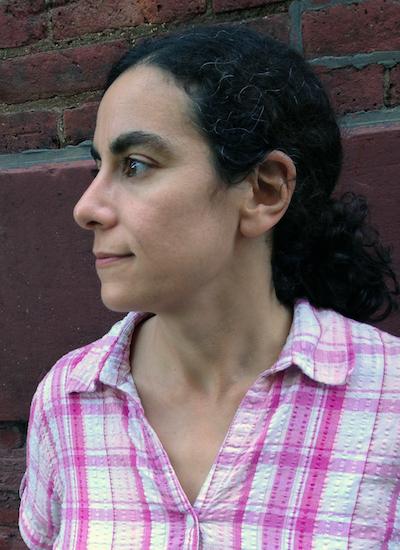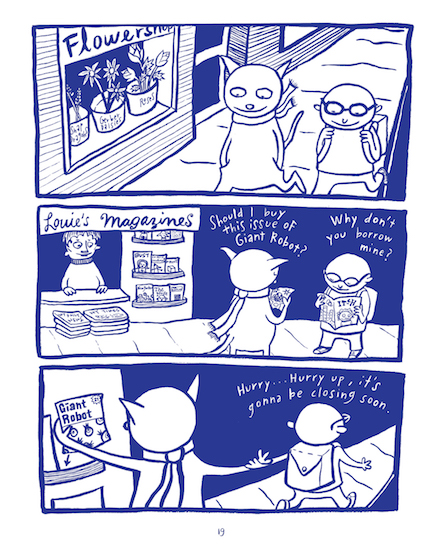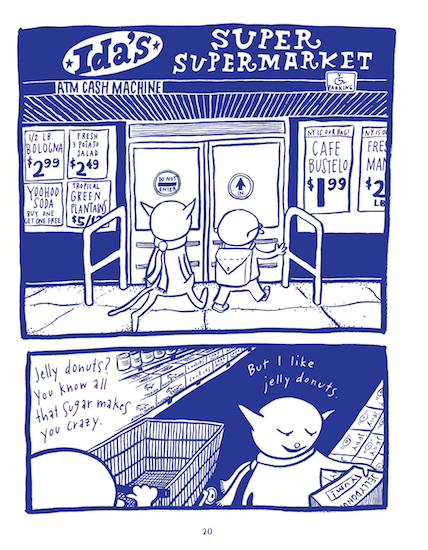Art Talk with Graphic Novelist Sara Varon

"I hope that people will look at [Sweaterweather], young people maybe, and see that you get better as you go along." — Sara Varon

Trained as a printmaker and animator in undergrad, Sara Varon never expected to become a graphic novelist. Her take on comics, she admitted, was that “they were really for guys, like superhero stuff.” An encounter with Craig Thompson’s 1999 graphic novel Good-bye, Chunky Rice, however, changed her mind. As Varon explained, “That was the first book that I saw where I loved the characters and it was not gender-specific. It featured characters that I could relate to.”
Over time Varon had learned that while she enjoyed the storytelling aspect of animation, she also yearned for the feel of a physical object that she got from printmaking. Comics offered the best of both worlds. Turning her hand to making comics gave Varon an outlet with which to tell stories while also indulging her love for printed matter. She also was able to explore the new skills she’d picked up while studying illustration as a graduate art student.
Varon’s latest work, a reissue of 2003’s Sweaterweather—updated with some new stories and notes about her creative process—features a cast of people, robots, and anthropomorphized dogs, cats, rabbits, and other animals going to the grocery store, worrying about rent, hanging out at the neighborhood pool, and other stories of daily life and relationships.
Varon’s stories often spring from an idea for a character. As she explained, “I start with a character and then I figure out what do I want to draw or what theme do I want, and then it’s about making a story that will enable me to draw those things or tie those things together.”
While Varon’s work often explores various aspects of friendship, she also noted that her creative process has evolved to become less about developing a certain theme and more about following a particular interest. As she put it, “I usually just find stuff that I'm interested in learning about and I make a project about it.”

With Sweaterweather, Varon was interested to revisit who she was as a younger artist and how things had changed in her artistic process. She calls the book’s new version “a journal about improving.” One notable difference between then and now, according to Varon, is how she sees the role of imagination in her process.
“In a way I think [my stories] were more imaginative back then. Now I would say I’m having a really good time researching while I do projects. I wasn't really doing that much research back then--I was just making stories out of my head that were imaginative,” said Varon. She added, “I feel like I've gotten a lot better in terms of making images, so that's nice to see too. I hope that people will look at it, young people maybe, and see that you get better as you go along.”
As she’s matured as an artist, Varon has also learned how to put failure—which for her means a lack of ideas—into perspective. “I feel like that's the perennial question for everybody: What to do when you’re stuck?” she said. Her antidote? “Just try and keep making stuff [even if] sometimes you’re forcing yourself, even if you make really bad stuff. It's ok to make stuff that's ugly. It's part of making stuff that's good.”




